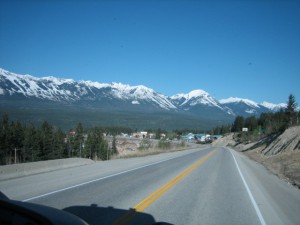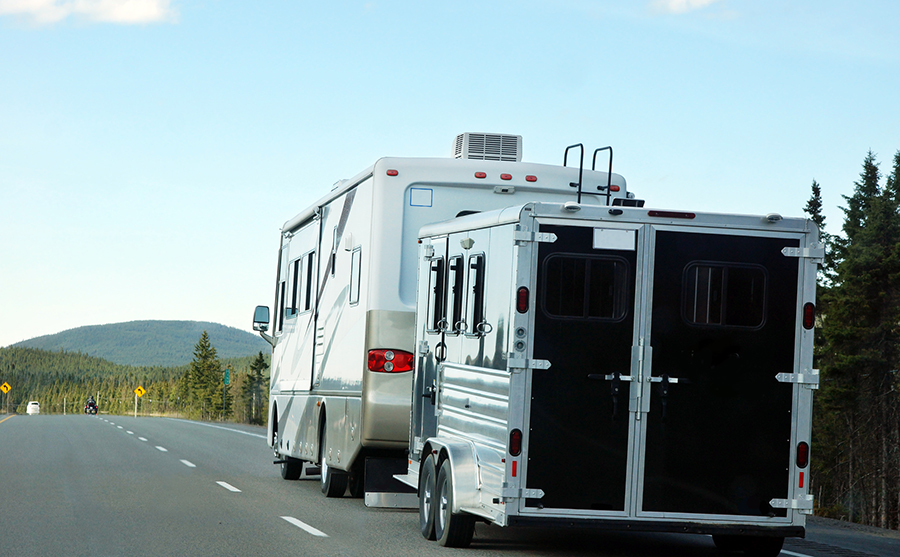RV fuel consumption — the big impact of slight elevation changes.
 Most people who own a recreational vehicle have on occasion wondered why their fuel mileage varies from time to time. Alright, we all know that driving speed, stop-and-go traffic, and wind resistance affects fuel mileage greatly. This is further amplified by weight and aerodynamics of our homes on wheels.
Most people who own a recreational vehicle have on occasion wondered why their fuel mileage varies from time to time. Alright, we all know that driving speed, stop-and-go traffic, and wind resistance affects fuel mileage greatly. This is further amplified by weight and aerodynamics of our homes on wheels.
So why do we see, on occasion, such a wide fluctuation? You have an apparent tail wind, but no savings. You experience a headwind, but it seems to be not so much a fuel burner. You drive with extra attention to fuel mileage and experience little change in expected results. Why?
Well, the culprit is not exactly “Rocket Science”! Sir Isaac Newton said, “For what goes up, must come down.” Thinking about that, how does that apply to pushing a heavy load up, or down, a grade? Well, with these weighty vehicles, lots!
So, how do you know if your RV trip suffers from “Elevation Fuel Syndrome”?
RV Fuel Consumption — Finding the Culprit
If you have a GPS, or know the elevation difference from departure point to destination, you can perhaps understand the concept. Changing your RV’s geographic elevation can substantially alter the unit’s fuel consumption. Even a gradual climb or descent will result in noticeable changes. It’s not the grades up and down during a day’s run, it’s the difference of elevation between the starting point and the day’s final destination. If you are 3,000 feet higher than where you left off, you will experience a higher fuel consumption. Likewise, seemingly great fuel mileage can be found if you returned the via the same route.
For example, a 25,000 -pound vehicle may require up to an additional 75 hp when traveling at 60 mph up a 1.9% grade. If that lowers the fuel mileage by, say, 1.5 mpg, the return trip might produce 1.0 mpg higher than usual. That’s a 2.5 mpg difference. The savings descending is not the exact opposite of the climbing rate due to the energy losses of braking effects.
-pound vehicle may require up to an additional 75 hp when traveling at 60 mph up a 1.9% grade. If that lowers the fuel mileage by, say, 1.5 mpg, the return trip might produce 1.0 mpg higher than usual. That’s a 2.5 mpg difference. The savings descending is not the exact opposite of the climbing rate due to the energy losses of braking effects.
So check it out next trip if your final destination elevation is much greater than your starting point. It just might explain the hidden losses or gains. And if you find yourself going through unexpected elevation gains, keep your eye on the fuel gauge. We recommend all RV owners invest in a roadside assistance plan, like Good Sam Roadside Assistance, to act as a safety net with helpful services like emergency fuel delivery in the case of an empty tank.
Explore more articles on fuel consumption. You can also shop several products designed to monitor and improve fuel performance.
Peter Mercer – With A Fuelish Thought









Peter Mercer
While elevation changes, resulting in barometric pressure variances, does have an affect, it is marginally nulled by built-in pressure corrective adjustments. This can result in better fuel mileage at higher elevations especially in a gasoline powered rig, as it reduces the fuel to air mixture. Additionally, the horse power is reduced as pressure drops in naturally aspirated engines. Less HP, less fuel consumed.
Great thoughts and thank you for your input on this topic.
Anonymous
Although informative, when looking at the title of the article, I was expecting this to be about the impact of elevation and thinner air on engine performance – is this not actually an impact with today’s engines?